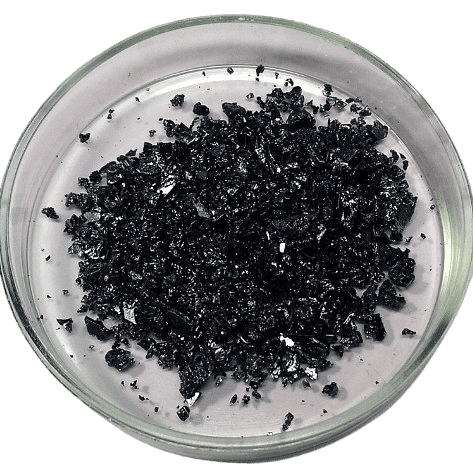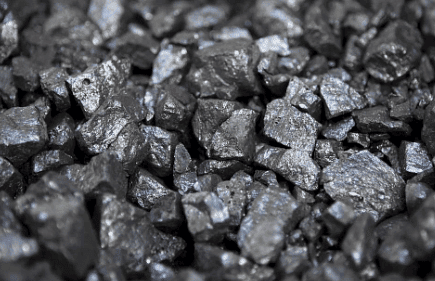Class 10 Science Chapter 3 Question Answers - Metals and Non-metals
Q1: Name the property due to which metals have a shining surface in their pure state.
Ans: Metallic lustre.
Q2: Name the two most malleable metals.
Ans: Gold and silver.
Q3: Name the most ductile metal.
Ans: Gold. Gold(Au)Q4: Name a metal that occurs in the free state.
Gold(Au)Q4: Name a metal that occurs in the free state.
Ans: Gold.
Q5: Give an example of an elementary substance that is a good conductor of electricity but is not a metal.
Ans: Graphite.
 Graphite Q6: Name two metals that are both malleable and ductile.
Graphite Q6: Name two metals that are both malleable and ductile.
Ans: Silver and gold.
Q7: Name the non-metal which is a liquid.
Ans: Bromine.
 Bromine(Br)Q8: Expand PVC.
Bromine(Br)Q8: Expand PVC.
Ans: Polyvinyl chloride.
 Polyvinyl ChlorideQ9: Name a non-metal which is lustrous.
Polyvinyl ChlorideQ9: Name a non-metal which is lustrous.
Ans: Iodine.
 Iodine CrystalsQ10: Metal A can displace metal B from BO, the oxide of metal B. Metal B can displace C from a solution of CSO4, the sulfate of metal C. Arrange metal A, B, and C in the order of increasing reactivity.
Iodine CrystalsQ10: Metal A can displace metal B from BO, the oxide of metal B. Metal B can displace C from a solution of CSO4, the sulfate of metal C. Arrange metal A, B, and C in the order of increasing reactivity.
Ans: C < B < A.
Q11: Name the metals that can be cut with a knife.
Ans: Lithium, sodium, potassium.
Q12: An element forms an oxide A2O3 which is acidic. Identify A as a metal or non-metal.
Ans: Oxides of non-metals are acidic while those of metals are basic. Hence, A must be a non-metal.
Q13: Why does calcium float in water?
Ans: Calcium reacts with water to form calcium hydroxide and hydrogen. Bubbles of hydrogen gas stick to the surface of calcium, hence it floats.
 Calcium(Ca)Q14:Arrange the following metals in the decreasing order of reactivity Na, K, Cu, Ag.
Calcium(Ca)Q14:Arrange the following metals in the decreasing order of reactivity Na, K, Cu, Ag.
Ans: K > Na > Cu > Ag.
Q15: Name the metals which do not react with water at all.
Ans: Lead, Copper, Silver, and Gold.
Q16: Name the element which shows non-metallic properties, but is also present in the activity series of metal.
Ans: Hydrogen.
Q17: If X, Y, Z, W, A, B, and C represent the metals in the decreasing order of their reactivity, which metal is most likely to occur in a free state in nature?
Ans: C is the least reactive, hence it is likely to occur in the free state.
Q18: Name any one metal which reacts neither with cold water nor with hot water, but reacts with heated steam to produce hydrogen gas.
Ans: Iron is the only metal that reacts neither with cold water nor with hot water, but reacts with heated steam to produce hydrogen gas. The chemical reaction representing the same has been given below:-
3Fe (s) + 4H2O (g) → Fe3O4 (s) + 4H2 (g)
 Iron(Fe)Q19: Mention the composition of aqua regia.
Iron(Fe)Q19: Mention the composition of aqua regia.
Ans: It is a freshly prepared mixture of concentrated hydrochloric acid and concentrated nitric acid in a ratio of 3:1.
Q20: In nature, metal A is found in the free state, while metal B is found in the form of its compounds. Which of these two will be nearer to the top of the activity series of metals?
Ans: Metal B will be nearer to the top because it is more reactive as it is clear from the fact that it exists in the form of its compounds.
|
80 videos|662 docs|80 tests
|
FAQs on Class 10 Science Chapter 3 Question Answers - Metals and Non-metals
| 1. What are the physical properties of metals? |  |
| 2. Give examples of non-metals. |  |
| 3. What is the difference between metals and non-metals? |  |
| 4. What are the chemical properties of metals? |  |
| 5. Name some common alloys of metals. |  |

















